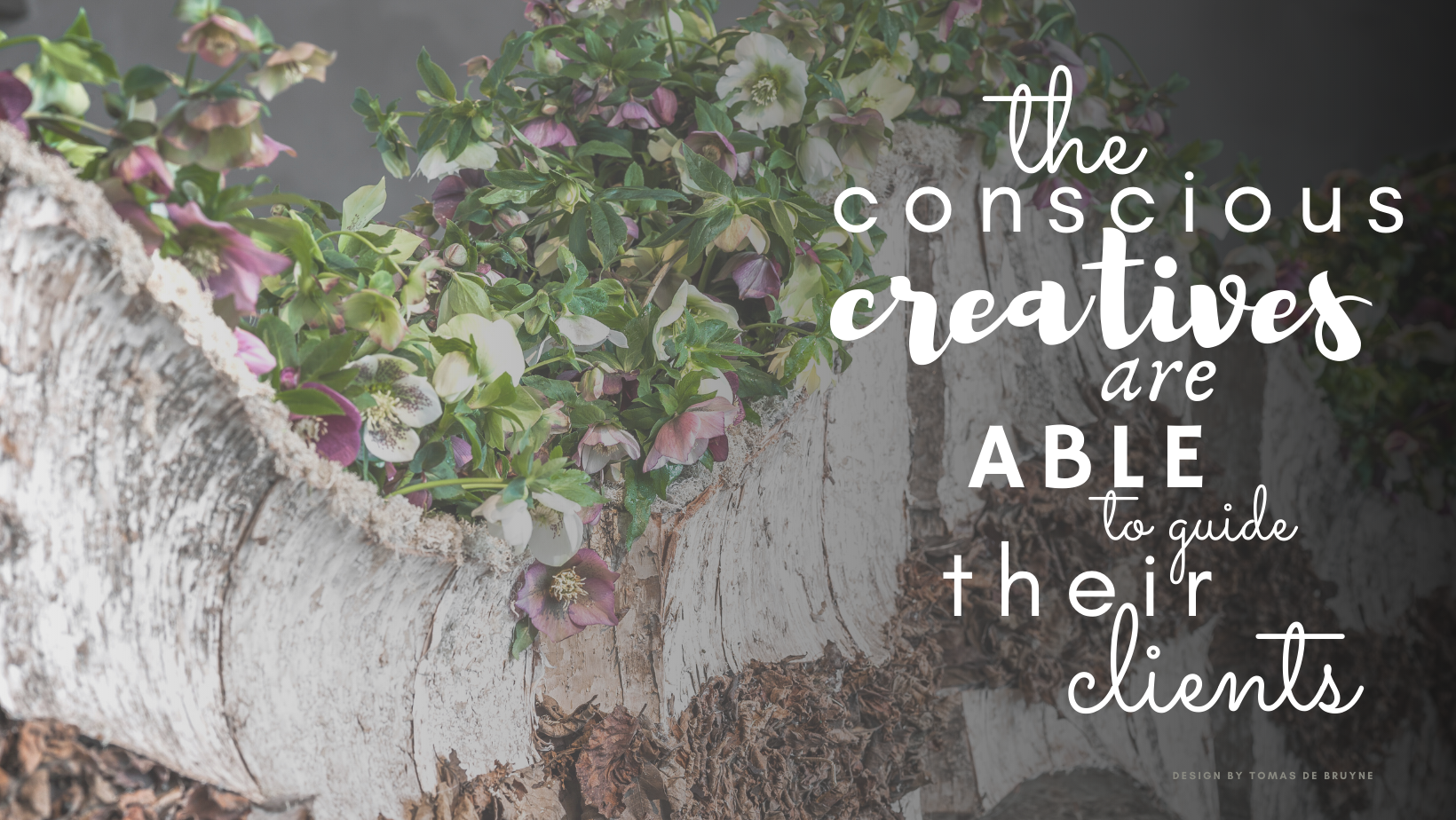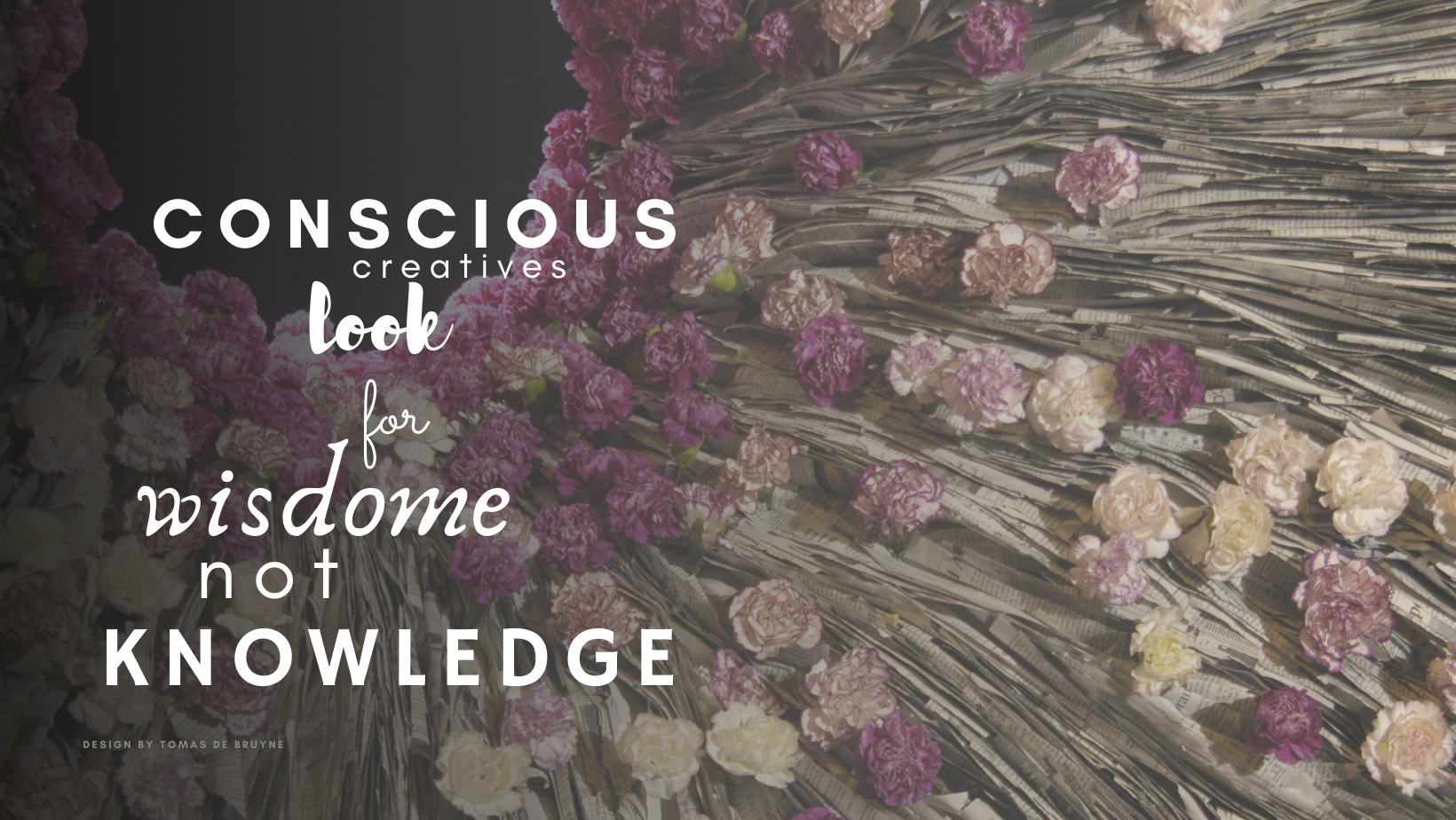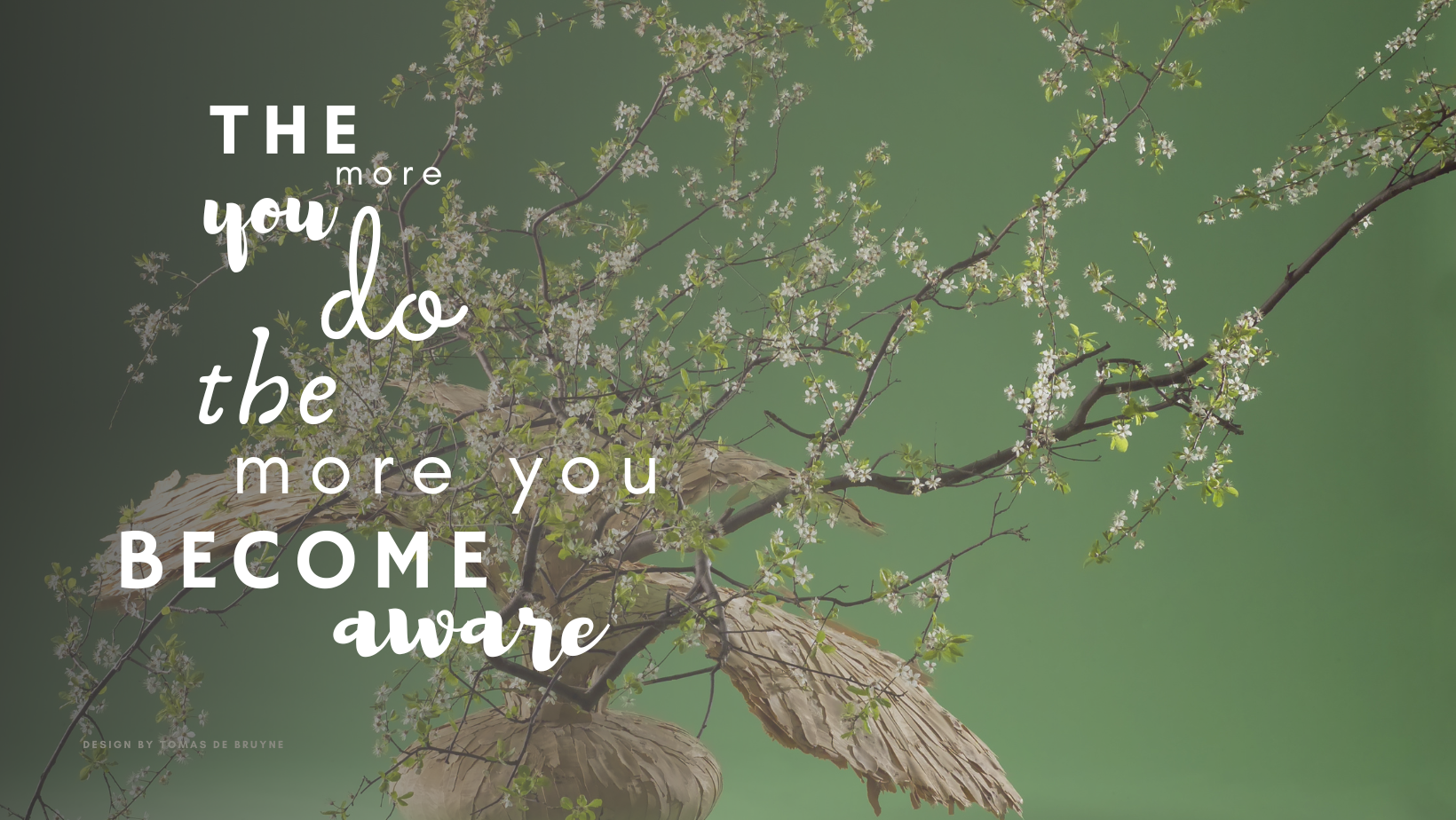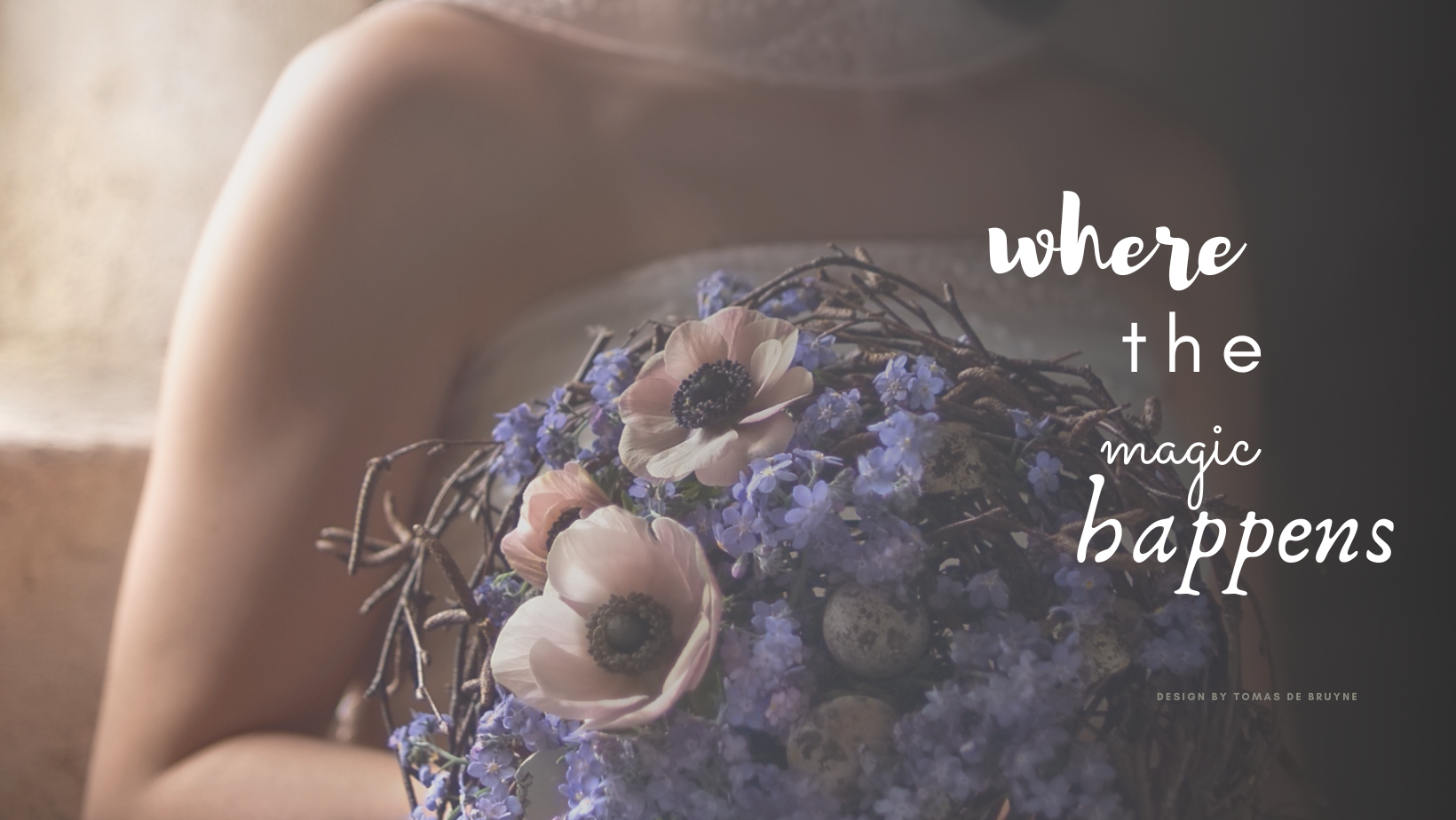Let's talk about the Conscious Creative
Jul 31, 2022Flowers are emotions
With Tomas De Bruyne, Lead Instructor at EMC
This stage is for me, the most exciting level, because this is a level that I feel very comfortable with. This is a stage that I want to explain. I want to share how I went to this stage because it took a while to get into and I am still growing within it. The conscious creative has a creative mind working in a conscious way. I'm going to repeat that because it is so beautiful. This is a conscious mind working in a conscious way. The art of conscious creative designers showcases their ability to see the full potential of their medium, of botanicals, containers, settings. And, also a feature of these designers which is important to mention is that they understand the language of design.
Conscious creatives interact with their medium, and allow their medium speak for itself. They don't have to come up with this story because the flowers are doing it for them. Whatever the experience, it is coming out from the flowers, from your design, which eventually raises the level of the final outcome of your work. These conscious creatives, they have the power. They have the power to communicate at the highest level, including the message for and from the client. Remember, the client is becoming more and more important. Who are you designing for? What is the purpose that drives them towards you as a designer?
Do you remember the novice? The focus on that stage was all directed towards the designer, and that's normal because a new journey always starts as an intrinsic experience, of self discovery. Who am I and where am I going? So, yeah, it is a process, but once you have reached stage five you know who you are. You don't have to show yourself, because your confidence level is high. The conscious creative knows their potential. They know how to work with the how; they know how to interact. They know how to communicate. In short, they crave their own place, and break their creative habits. Isn't that cool? To paraphrase Deepak Chopra, the conscious creatives realise that the most creative act they will ever undertake is the act of creating themselves.

They understand that creativity doesn't repeat itself because it's a conscious practice of growth. And that's why I came up with EMC, that was my whole purpose behind writing the curriculum and creating the teaching system that take designers to that point where they see the infinite possibilities in creativity. In a business journey, they call it the stage of the resource. It will make so much sense to you. And if you can adapt your creative mindset to the kind of entrepreneurship mindset, it will come together. In this stage, the conscious designers adapt themselves very quickly to the market. They also can adapt themselves very quickly to the challenges they face. And they're okay. They can deal with high demanding clients because they have self-confidence, and they know they can come up with solutions.
A conscious creative is able to guide the clients, no matter how difficult or demanding they are. The fact that you are self-confident also means you are okay with taking risks, creative risks, and it becomes second nature, and I can speak for myself when doing big events. I'm willing to take some risks. Those content conscious creatives, they understand, and they speak the language of design fully and use this to its full advantage. Full potential is a concept that comes into play, but not only in the design process. If you have a piece of white paper and you start a design, you have already started to imagine, but during the action of the implementation of the design that you put on the paper, you may realise when making the decisions that it will not always work out as envisioned initially. Do you remember when I was talking about you feeling okay with giving yourself an hones feedback over projects that don't go well . Conscious creatives can do that. They are comfortable with it because they know that they have made a mistake. They can put themselves back on track and the best thing is that they have learned from it. Next time they will not make that same mistake because they are better. Honestly, I was there. I also made mistakes. I learned from it and moved on. And that is something I want to share with you.

I want to give this wisdom, so you don't have to make those mistakes. The constant creative gives themselves a space and freedom to play with their needs, to let their creativity and their passion bloom. That is important. If you can flourish with your passion, your creativity, you are in a good place. You already have good energy. You believe in your own creative power. You manifest this in your creative potential, meaning an open mindset at its fullest potential. That's awesome! If you can reach an open mindset at that kind of a level, at its fullest potential, I can promise you, you will have a whole new world opening up for you. This point of view creates a love for learning, the way most conscious creative artists, fashion designers, photographers, etc. have power. If you put together design wise a group of car designers, and other creative, visual artists, they all have this in common. Once the stage of conscious creativity is reached, the focus should be directed to also keep the novice attitude in yourself, to keep the curiosity and wondering factor in everything you do and design.
Curiosity plays a big role in the conscious creative. What you see, what you do and everything that excites you when you feel the flow of those conscious pheromones. They tap into the infinite world of ideas and potential, and they are passionate creatives. They want to move on to the next level; level six, level seven, level eight, level nine, I don't know how many more levels. There are not just five levels. I have just condensed it to five levels, but you know what? It's an infinite journey, or as we say in EMC, it's about achieving the Infinite Creative Effect. Conscious creatives look for wisdom, not knowledge. Knowing creativity is a form of art. Creativity must be spontaneous

Elements and Principles of Design
Remember what we were talking about in the previous blogs? How do creatives deal with the elements and principles of design? Well, in here, they build on it. It becomes their language. They say that they are going to build on and consciously, and unconsciously, they are going to use it and, of course, they're going to dive deeper into it. This is something that we do with our graduates. If you are a graduate, we challenge you to grow and to dive deeper into what and who you are. This means finding your own signature style. If you have your own signature style, believe me, you're different and you don't have to get bigger. You don't have to have millions of clients. No, you can be different by only having a specific kind of working, a specific style, a specific selection of flowers, of colour and place etc. That's the beauty of it all - being different. The Elements and Principles of design become the nature of conscious creative designers
Nomenclature
Conscious creatives known their nomenclature by heart, and they are not just using it, but they are on the search for the botanical potential. I will tell you a story. I was asked to do an event in India and the room had a lot of mirrors. The client had the idea of what he wanted, and he said that he wanted me to design the room with lots of flowers; and then the people would come in and they will be surrounded by flowers. I explained to him that the story would come from the mirrors and the reflections, about where the light bounces on the surfaces, and on the back of the flowers. I went, not for a million colours, but I chose many colours so that I created a rainbow, with the light reflecting from the mirrors onto them. The choice of botanical was important and I went for the Anthuriums, not necessary the most desired flower in India for events, but certainly the flower with most potential for that particular design. The glossy texture reflects light, the colours are amazing and I used my ability to guide the client towards embracing my idea and trusting my abilities as a designer. The result spoke for itself.
Colour
When we design, what people will see are actually four elements. The first element is by far colour. The strength of colours in design is immense and nothing outshines colour. Of course, you have the primary colours. The next is the contrast. Is there a big contrast or a small contrast? Contrast attracts your eye. The actual physical movement takes precedence next and the last one is the size, and you don't always have to go to a big size, but if it's huge, it will grab your attention.
Take those four elements into consideration when you design something. I'll give you an example. If you are in a conversation or you're watching television and somebody comes into your living room, where there is a programme on the television, it is difficult not to turn your head towards the television because it's moving. There are lot of colours. There's a lot of tension and contrast, and the bigger that screen, the harder it will be to not turn your head. You know what I mean? So those are the elements, but this is how a conscious creative works with the elements, with the dynamics, with the gestalt and so on.
Conscious creatives see colour as a vital element in that their own projects. I see that also in the events and by the way, I am leaving to go in Dubai to speak at a wedding conference for wedding and event designers. I have got to explain the power of colour and the quality outcomes of colour. How do you see the potential of colour? How do you work with colour? How do you read colours? How can you be inspired by colours? How do you extract and play with dimensions in colours? That is a very interesting one. Basically, how can I use colour to my advantage in what I do as an event designer? This is also something what we actually see in the Advanced Course in EMC, not in the Foundation course. They are very conscious about using the colours and seeing what happens when I design something, I will not say, ‘I will use roses.’ No, I will say ‘I am going for RED. I am serving a level in the market. Then I will go for a red botanical, a red flower which really suits perfectly. I can tell you I did an event and believe it or not, we only had five varieties of flowers. I can say we used more than 250,000 flowers, but only five types. Can you imagine how somebody who is not a conscious creative will freak out? I can tell you that somebody who is a novice will freak out. And I get that. I was like that in the beginning when I was younger. I was there and would say, give me an arrangement or give me an installation, but only five varieties, I would say, are you sure? Do you know what you asking me to do? That is impossible. Nobody can do that if you are always thinking from the same mindset that you are in at that moment, but you may come up with solutions, create it in your own atmosphere! The more you do, the more you become aware; the more you become conscious, and the more you see possibilities.

Techniques and mechanics.
Well, for the conscious creative, it's not that they do not understand. They have to know a lot of techniques, but they are not focused on techniques. They are focused on what can a technique do for you. They are focusing themselves more on the process. For instance, I come up with a design and I have to be able to hang the design, so I have to use the right technique. What I am doing is limiting my way of thinking. I limit my creative mind, which is not good. The first thing I know is that I am going to hang something. I don't know how or what but, I'm going to do something, I'm going to hang something. The next process is, how are we going to do that? You have a lot of techniques. You start to open your suitcase or your box with all your techniques, and you start to take one, maybe two, maybe three, or possibly four techniques, And you combine those four, five or even six techniques to come up with a new kind and implementation of techniques. It is not a new technique, but it's a new combination. Think about a song. The composer always uses the same notes, but how many songs are already on this planet, using all the same notes.
This is exactly what the conscious creator does. He breaks the techniques. He picks the mechanics, which he can start to work with.
Emotions.
Finally, these creatives are not the masters of emotions. They are mastering the skills of playing with the emotions of the people, the clients and guests, because they know how to work with the flowers. We have to go beyond what we know. This is the emotion. These conscious creatives have the best clientele. I am so fortunate, as I have the best clients in the world because they respect conscious creative input.
You will find that they respect your personality. They respect you as a creative because they know you can deliver. The clients are open and confident to follow the design principles of the conscious creative, and I'm willing to produce the designs for them. Also, they are willing to pay for it because they know you will deliver. They know that the goal for both is the creativity with the medium. You remember we were talking about the novice and the knowledge. It was all about the medium. As we went through the state of the everyday designer and still the medium was really important, but it was nothing without creativity. Then we went for the creative designer, and that was when we went onto that tipping point. Then you can say, you have got the medium, the flower varieties, and you have got the creativity. It is a kind of balance. As you go onto the skilled creative, and then to the conscious creative, what happens? The creativity becomes greater and more important. The medium is becoming less and less. That means you attract people who wants to pay you for your creativity, and you make more of an effort because you add value to your product. Your niche number of clients is getting smaller, but that's okay. That's okay because people are willing to pay for it. The better you are, the greater will become your reputation, and the more they are going to pay for you. Keep that in mind. Here they have realised that botanicals are the medium with which they work and the focus of the creativity of the conscious creatives is totally in the creative process.

That is where the magic happens. Not in the implementation but the better the creative process, the better the contemplation, the better the outcome which will always follow the process. Remember that the quality of the outcome, always follows the quality of the process. Most of our designers, they are so focused on the outcome without focusing themselves on the actual process. The outcome actually happens in a process to create the magic. What happens is that conscious creative is growing, people are looking up to them and they see this, so they can also become an influencer. They can influence with what they do, and they can influence their peers. It can be on several aspects, and it can be with the elements and principles. Design can be with the colours. It can be how they communicate the emotions. It can be techniques and it could the trends or whatever, but that would be coming influences.
And you know what the secret of magic is? There's no magic. There's only consciousness.
lecture by Tomas De Bruyne
edited by Sara Marie Andrews, EMC and Diana Toma, EMC
Don't miss a beat!
New blogs, course offerings and what we are up to delivered to your inbox!
We hate SPAM. We will never sell your information, for any reason.


